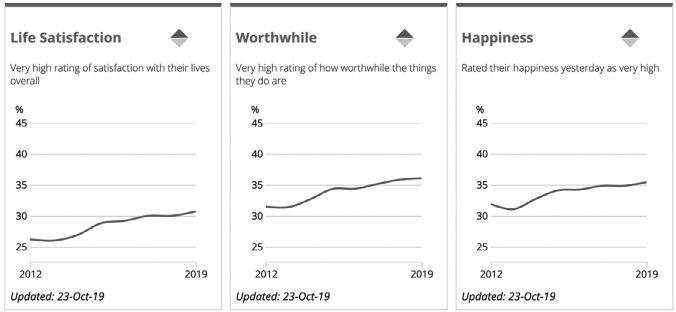J. Garca-Fernndez and P. Glvez-Ruiz
1. Introduction
The sports sector is an industry that houses different and numerous business opportunities and, therefore, marketing. Different studies and reports show how the number of companies and organisations that promote and offer sports products and services worldwide has increased. This fact has also had an impact on the increase in sports practitioners and consumers, who demand services and products for better and greater sports practice.
Among the different industries developed by this sector, is the fitness industry. This industry has become a permanent wave of news and innovations in sports services, which has increased its interest in the scientific community due to the speed with which they produce changes that affect both the management of organisations and consumers. In fact, more and more research can be observed that analyses how fitness organisations behave and what the behaviour of their consumers is.
But the fitness sector could be different depending on each region and each country. Thus, depending, for example, on the socio-cultural aspects of a country, the needs of its inhabitants, the culture or sports tradition or simply depending on the purchasing power of the regions, fitness centres could have some peculiarities that would make them different between different regions. In fact, business models in the fitness sector could differ according to the countries and therefore also the sports offer they promote. Likewise, these differences would also have an impact on innovations in sports services and therefore on the differences between consumers who attend sports facilities.
At the same time, although the services they offer are new, it is important that fitness centres know how to market their services and therefore can get more consumers and for longer. Thus, marketing actions are totally necessary in a market that is beginning to professionalise and, therefore, competition is increasing.
These differences between regions of the business models, the offer of sports services as well as the marketing actions that are carried out depending on the countries and each culture, could help to better understand the sector, and, therefore, would help to have a global vision of the business models, the behaviour of its consumers and its marketing actions aimed at both recruitment and loyalty.
For this reason, the aim of the book is to show what are the business models in the fitness industry in 20 countries around the world and share their ways of marketing. The content provide knowledge about the current situation and what are the challenges of the future. In particular, this book describes the status of business models, the type of sports consumer and how fitness centres communicate/relate to different countries. In short, a book that shows the globalisation of the fitness industry, and its different ways of marketing according to different countries.
For an introduction to the chapters included in this book, the contents are divided into four sections. Each section includes different relevant countries in the fitness sector from each of the main regions of the world: Europe, the NorthSouth America, Asia-Pacific and Africa and Middle East.
The first block of chapters, the Europe industry, provides data of interest from United Kingdom, Spain, Portugal, Greece, Lithuania, Turkey and Italy. The second part, the NorthSouth America industry, includes four chapters of interest about the countries of the United States of America, Mexico, Chile and Brazil. The third part, the Asia-Pacific industry, provides information from countries as India, Australia, Japan and China. Finally, the last section, the Africa and Middle East industry, shows the fitness sector from Morocco, Saudi Arabia, Egypt, Kenya and Iran.
In relation to the structure of each chapter and for a better understanding of the contents, it has been decided to divide all the chapters into equal blocks, facilitating the understanding of what the differences are between regions and countries, and above all it provides knowledge of what are the actions to be developed by countries with a more professionalised sector.
For these reasons, each chapter is divided into six sections. A first introductory section that shows what is the social and economic reality of the country, what are the lifestyles of its habitants or what are the different motivations why consumers attend fitness centres. The second section aims to show which are the business models in the fitness sector in each country, providing information on prices, types of sports facilities, types of sports services offered and curiosities related to the models that grow in each country. The third section of each chapter aims to show which are the main actions carried out by fitness centres to attract new customers, the fourth section being a continuum of this, that is, what are the actions carried out by the sector in the specific country in terms of customer loyalty. The fifth section of each chapter aims to show a specific chain in the country, detailing all data of interest to the community and that can help improve the fitness sector. Finally, the sixth section aims to be a concluding text with which the authors of each chapter show what the fitness sector in their country contributes, and what it can teach professionals from other countries.
In short, a book that wants to provide knowledge of the reality and current affairs of business models in the world fitness sector, and what are the marketing actions carried out in each country to attract and retain their consumers.
The Global Private Health & Fitness Business: A Marketing Perspective, 12
Copyright 2021 by Emerald Publishing Limited
All rights of reproduction in any form reserved
doi:10.1108/978-1-80043-850-720211001
Chapter 2
The Fitness Industry in the United Kingdom
R. Algar
1. Introduction
The United Kingdom (UK) comprises the four nations of England, Scotland, Wales and Northern Ireland. Its population is estimated to be 66.8 million people in mid-2019 compared with 58.7 million people 20 years earlier. This represents a compound annual growth rate (CAGR) of 0.64% over 20 years. For comparison, the 28 countries that comprise the European Union (EU) saw their population grow 0.28% over the same period.
The UK has the second-largest economy in Europe which was valued at 2 trillion in 2019 (Office for National Statistics, 2020). Its economy has been growing steadily at a CAGR of 3.86% over the 20-year period 19992019.
2. Measuring the Prosperity of a Country
Many countries now measure the prosperity of a country beyond the financial value of what it produces or consumes. In 2010, the UK Office for National Statistics launched the National Wellbeing Programme. David Cameron, the then Prime Minister, stated:
We will start measuring our progress as a country not just by how our economy is growing, but by how our lives are improving, not just by our standard of living, but by our quality of life
This means that questions such as Overall, how satisfied are you with your life nowadays? and Overall, how happy did you feel yesterday? now feature as important non-financial measurements. illustrates how life satisfaction, the worth or purpose of the things people do and happiness have all been increasing since 2012, though only approximately one-third of the population rated their experience very high.

Fig. 1. Life Satisfaction, the Worth (Purpose) of the Things People Do and Happiness.













